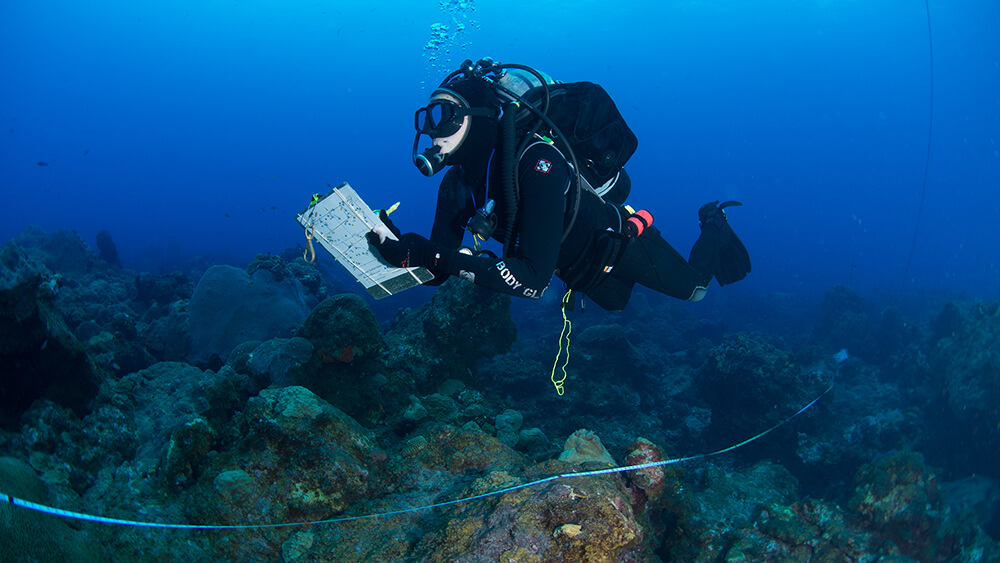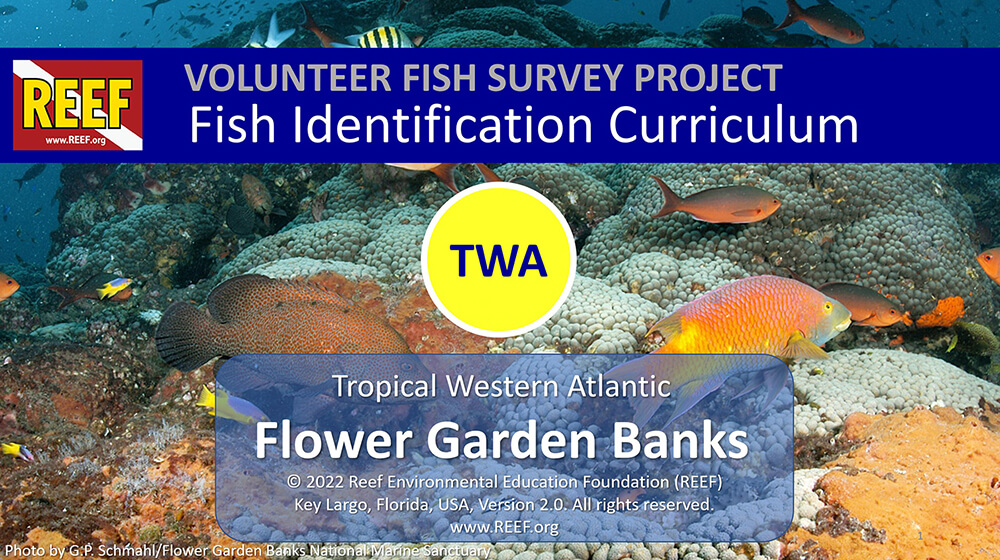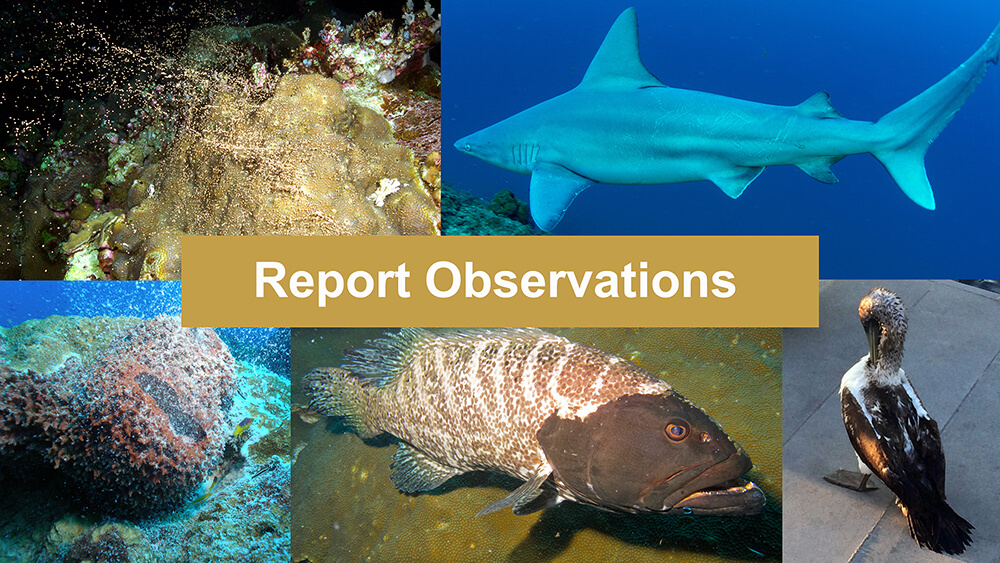
What is Citizen Science?
Citizen science refers to voluntary public participation in the scientific process, addressing real-world problems. This may include conducting scientific experiments, collecting and analyzing data, and making new discoveries.
Due to the remote location of Flower Garden Banks National Marine Sanctuary, sanctuary staff are limited in how often they can visit and collect data. Citizen scientists can help us fill in the gaps by telling us about their visits, including general observations about the health of the reefs and the types of wildlife they see there.
Be a Citizen Scientist!
If you visit Flower Garden Banks National Marine Sanctuary for fishing, diving, or simply on your way to somewhere else, you can tell us about what you see in a variety of ways.
1. Share Your Photographs through iNaturalist
Photos of wildlife viewed above and below the water's surface can let us know what is out there, even when we aren't. You can upload those photos through iNaturalist, an online app for sharing biodiversity information. The app will help you identify what you saw and provide us with sighting information at the same time. It's a great way to learn to identify all those cool fish and invertebrates that capture your attention!

iNaturalist is also a key tool for the worldwide bioblitz called City Nature Challenge, which takes place every April. Flower Garden Banks National Marine Sanctuary is part of the Houston/Galveston City Region for that event, and species photos from the sanctuary can really boost our regional totals. Houston/Galveston regularly places in the top five in the world for this event. Your entries can keep us competitive!
2. Conduct REEF Fish Surveys
Surveys of the species and quantities of fish that you see in the sanctuary help us understand more about seasonal fluctuations and alert us to new sightings. Any diver or snorkeler can conduct a survey by participating in the Volunteer Fish Survey Project created by Reef Environmental Education Foundation (REEF). The only materials you need are an underwater slate and pencil, a good reference book, and access to the internet to submit the data online.

Flower Garden Banks National Marine Sanctuary offers Fish ID classes a couple of times each year to help with this process. Our classes focus on the top 50 fish you are likely to see in the sanctuary. We provide information on body shapes, key markings and coloration, and helpful phrases for remembering them, using the REEF curriculum created especially for this little subset of the Caribbean.
3. Report Your Observations
Please tell us about your visit and any interesting observations you made by emailing us at flowergarden@noaa.gov.
Was something spawning? Did you see any sharks, rays, or sea turtles? Was there any coral bleaching? Were fish acting strangely? Did something not look quite right? Did you see a bird or a whale at the surface? Sanctuary staff want to know.

Be a superhero for science! Submit your photos, do a survey, or just report your observations. Every little bit helps.

